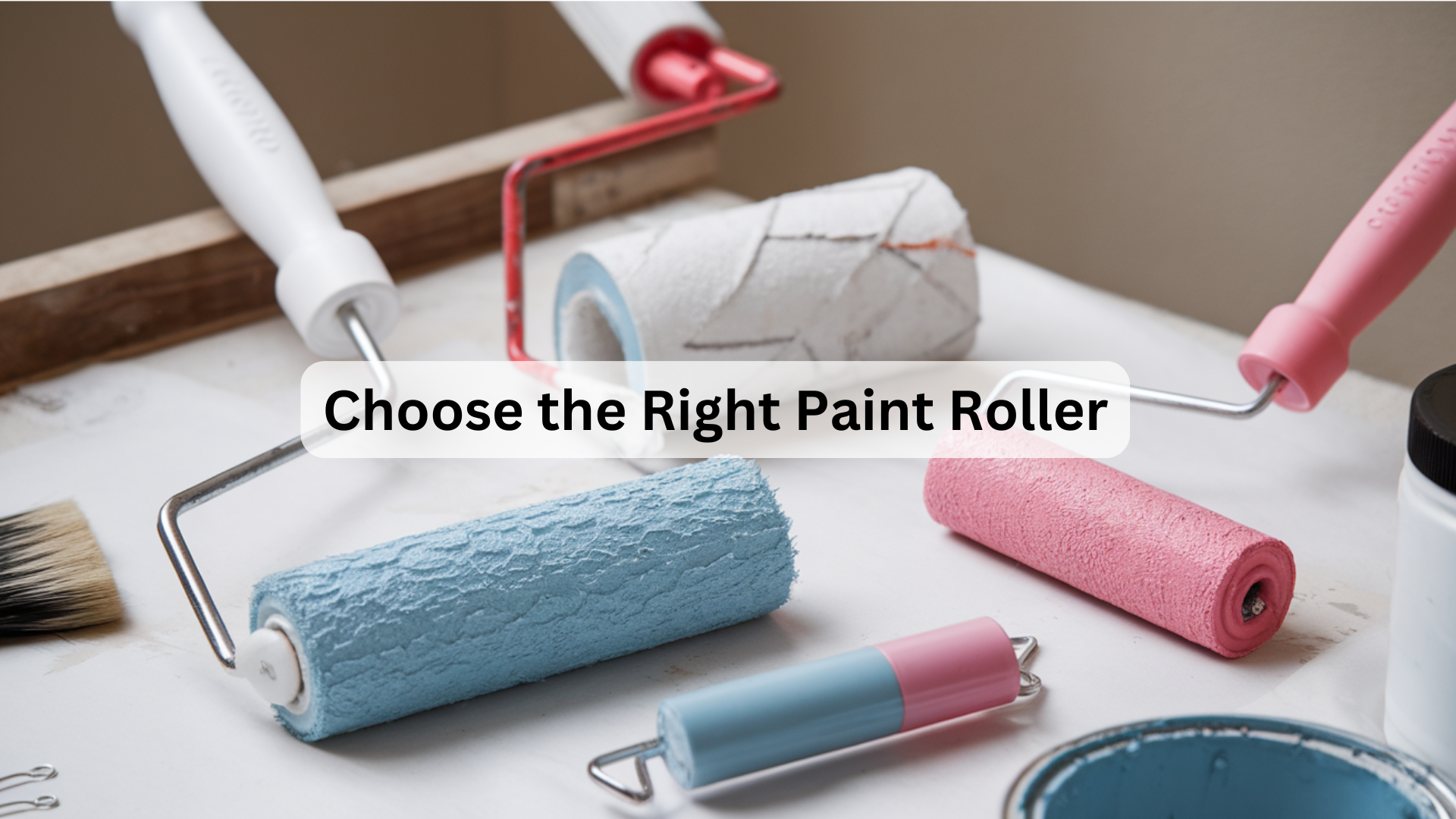Painting can transform a room from dull to amazing in just a few hours. But here’s the catch: your roller can make or break the entire project.
What’s inside this guide?
- A complete roadmap to selecting the perfect paint roller
- Insider tips from years of painting experience
- Solutions to common painting frustrations
Have you ever picked up a roller and ended up with a messy, uneven finish? You’re not alone. This guide will walk you through exactly how to choose the right roller for any surface.
It doesn’t matter if you’re a first-time painter or a weekend warrior. I’ll help you avoid common mistakes and achieve professional-looking results.
Understanding Paint Rollers: The Basics
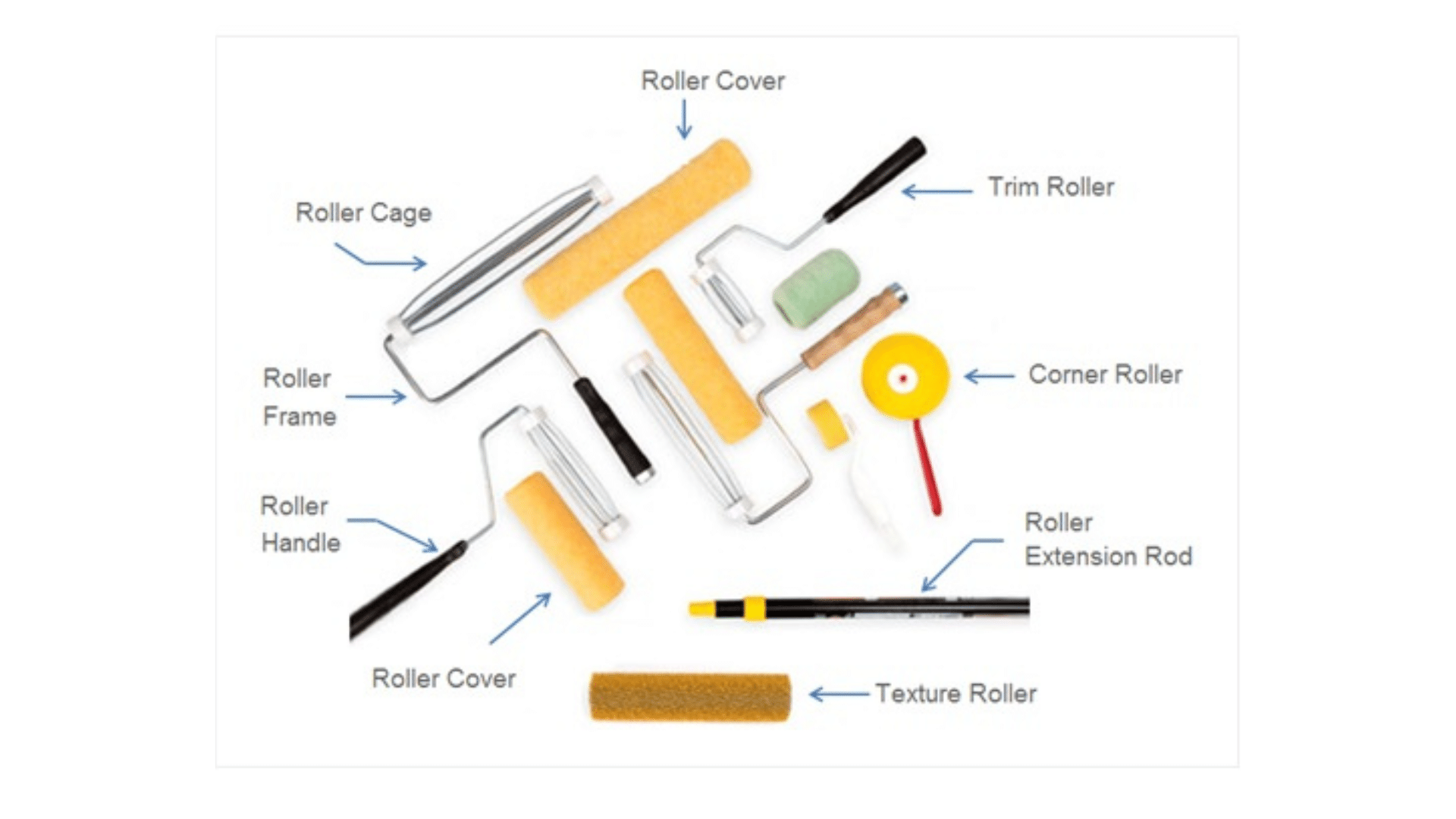
Let’s break down the essential components of a paint roller:
- Roller Frame: The handle that gives you control and stability
- Roller Cover: The part that holds and spreads the paint
Think of it like a team. The frame is your guidance system, while the cover is your paint delivery mechanism. Understanding how they work together is key to a smooth painting experience.
Why Roller Selection Really Matters?
Choosing the right roller isn’t just a minor detail – it’s crucial.
- Event Coverage: The right roller ensures paint spreads smoothly
- Time Savings: Reduces the need for multiple coats
- Waste Reduction: Prevents unnecessary paint drips and repainting
- Professional Finish: Makes your project look clean and polished
Using the wrong roller is like trying to cut a steak with a spoon. It just doesn’t work right.
Assessing Your Painting Surface
Not all surfaces are created equal. Your roller choice depends on what you’re painting: Every surface tells a unique story, and your painting roller is the storyteller.
Understanding the nuances of different surfaces is crucial to achieving a professional-looking finish.
Let’s break down the world of surfaces and uncover the secrets to perfect painting.
Smooth Surfaces
- Examples: Drywall, plaster, cabinets
- Requires: Rollers with a shorter nap, minimal texture
Textured Surfaces
- Examples: Stucco, brick, rough wood
- Requires: Rollers with longer nap to reach into crevices
Material Considerations
- Wood: Requires a different approach than metal
- Concrete: Needs special attention
- Metal: Demands precise application
Types of Roller Covers Explained: A Comprehensive Guide
Choosing the right roller cover is like picking the perfect tool for a specific job. Each type has its strengths and ideal use cases. Let’s explore the world of roller covers and uncover their secrets.
1. Foam Rollers: The Smooth Operator
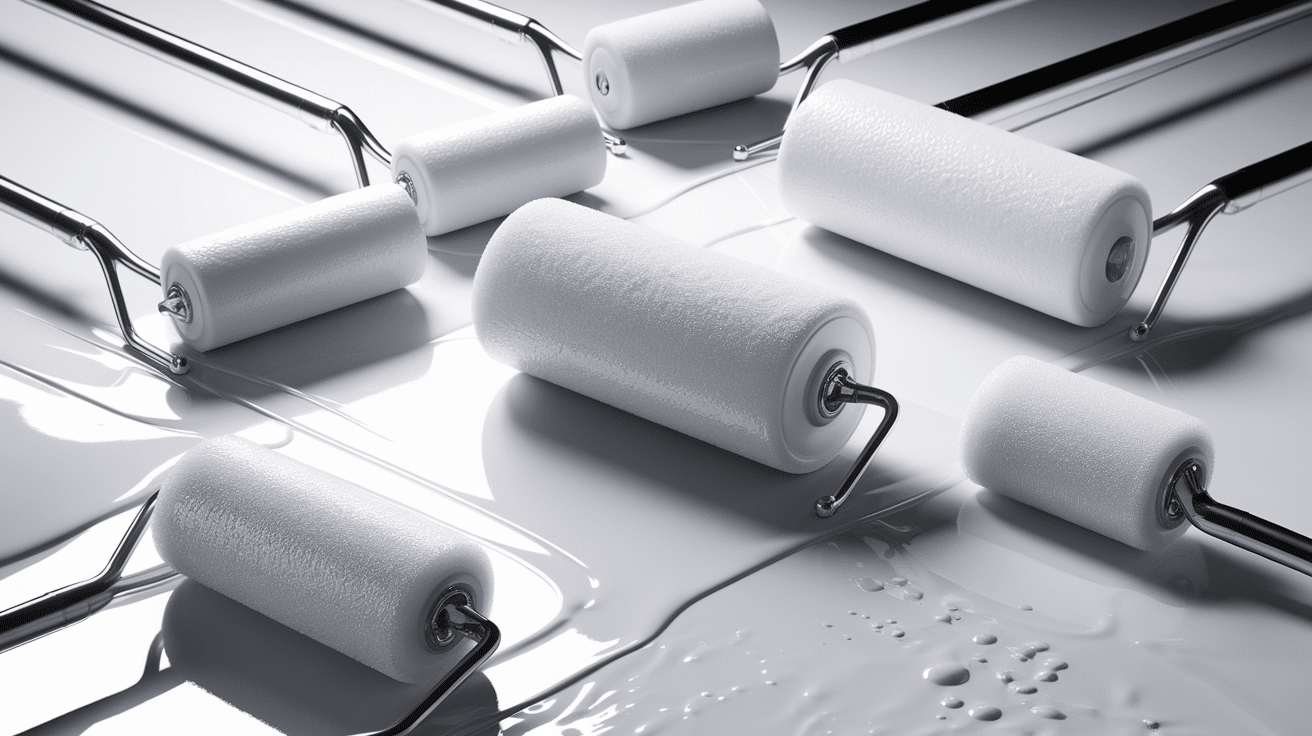
When to Use: Absolutely perfect for ultra-smooth surfaces
- Ideal Surfaces:
- Cabinets
- Doors
- Trim work
- Furniture
- Smooth metal surfaces
Detailed Pros:
- Flawless Finish: Creates an almost glass-like surface
- Zero Lint: Unlike some other rollers, the foam doesn’t leave fuzzy residue
- Precise Application: Excellent for detailed, small-scale projects
- Great for Smooth Paints: Works wonderfully with enamel and glossy paints
Important Cons:
- Limited Versatility: Not suitable for textured walls or rough surfaces
- Paint Absorption: Holds less paint compared to other roller types
- Delicate Nature: Can tear or break down faster with heavy use
Pro Tip: Use foam rollers for projects where a mirror-smooth finish is crucial. Perfect for furniture refinishing or creating a sleek look on trim and doors.
2. Microfiber Rollers: The Paint-Loving Champion
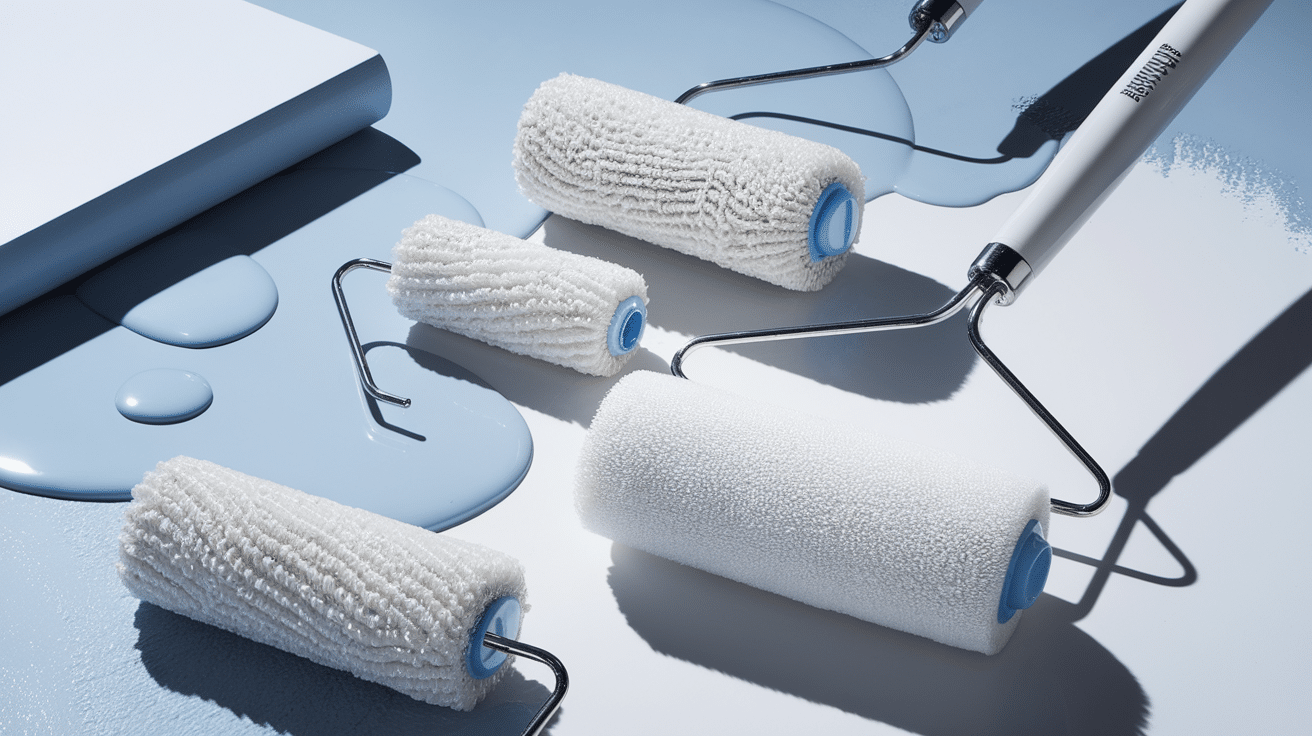
Best for: Walls and ceilings with slight to moderate texture
- Perfect Surfaces:
- Drywall
- Lightly textured walls
- Ceiling applications
- Interior painting projects
Detailed Pros:
- Superior Paint Retention: Holds more paint than traditional rollers
- Minimal Dripping: Helps create a cleaner painting experience
- Smooth Coverage: Provides even paint distribution
- Versatile Performance: Works well with multiple paint types
Potential Drawbacks:
- Higher Price Point: More expensive than standard rollers
- Less Durability: May wear out faster with extensive use
- Can Be Sensitive: Might not handle extremely rough surfaces
Pro Tip: Microfiber rollers are a go-to for DIY enthusiasts looking for professional-quality results without extensive painting experience.
3. Natural Fiber Rollers: The Traditional Craftsman’s Choice
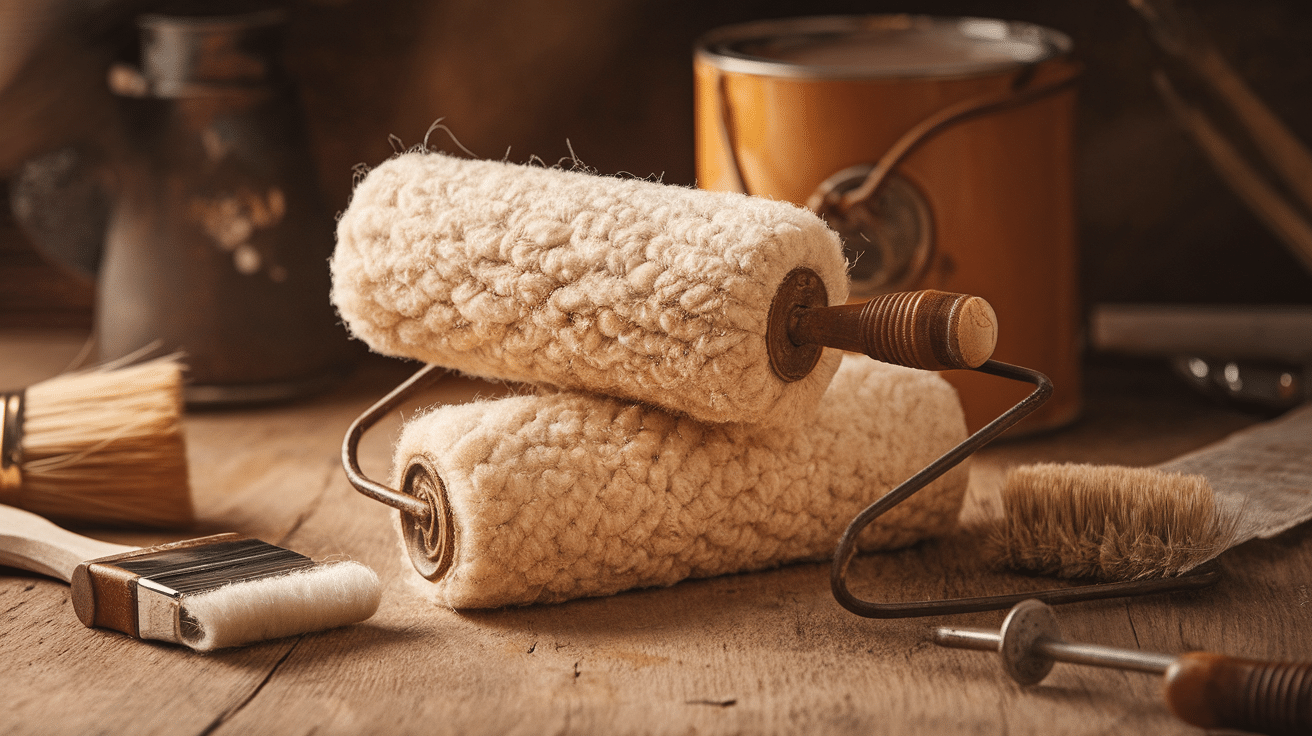
Best for: Oil-based paints and textured surfaces
- Ideal Surfaces:
- Rough wood
- Brick walls
- Stucco
- Exterior painting projects
- Textured interior walls
Detailed Pros:
- Exceptional Paint Pickup: Absorbs and releases paint effectively
- Works Great with Oil-Based Paints: Traditional natural fiber performance
- Reaches Texture: Can get into crevices and uneven surfaces
- Soft Application: Gentle on delicate surface textures
Crucial Cons:
- Fiber Shedding: This may leave small fibers on your painted surface
- Limited Water-Based Paint Use: Not ideal for latex or water-based paints
- Requires More Maintenance: Needs careful cleaning and storage
Pro Tip: Natural fiber rollers like lambswool are perfect for traditional oil-based painting techniques, especially on exterior or rough surfaces.
4. Synthetic Rollers: The All-Purpose Warrior
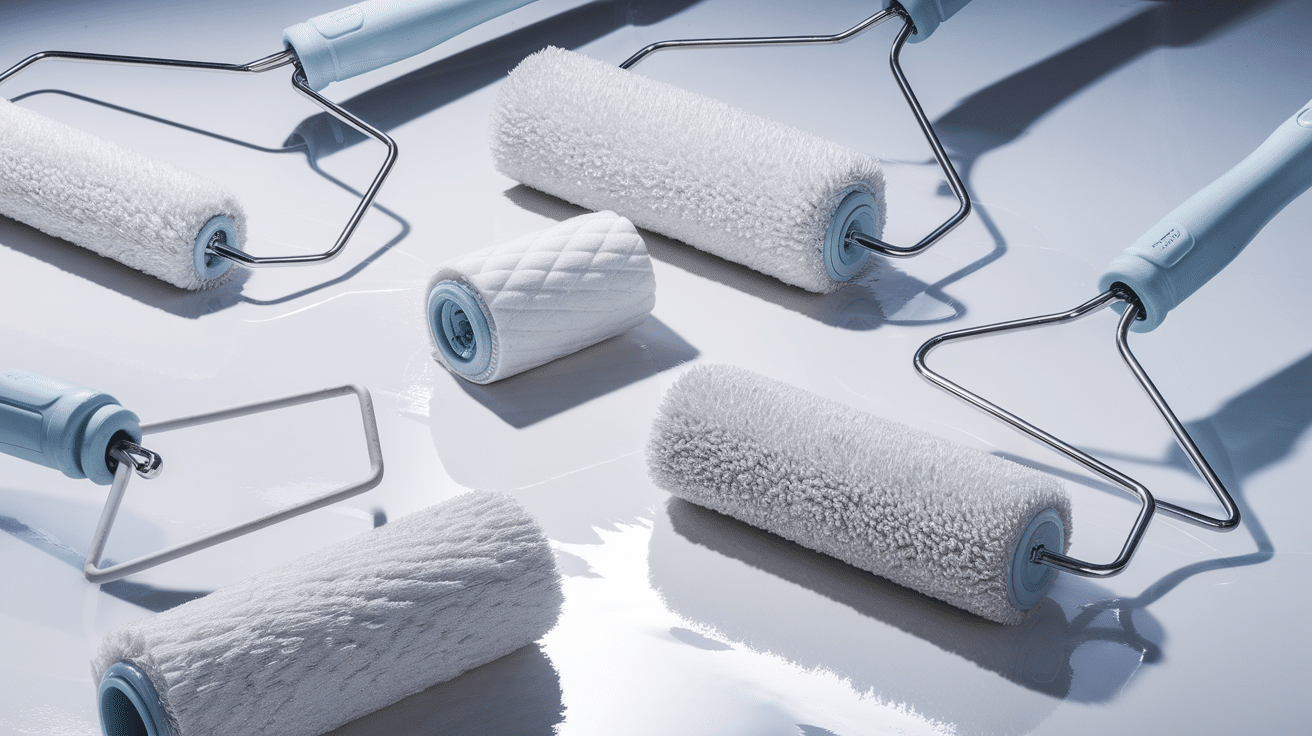
Best for: Water-based paints across various surface types
- Versatile Surfaces:
- Drywall
- Smooth walls
- Wood surfaces
- Interior and exterior projects
- Multiple paint types
Detailed Pros:
- Extreme Versatility: Works with almost any surface
- Water-Based Paint Compatibility: Excels with latex and acrylic paints
- Durable Construction: It withstands multiple painting sessions
- Easy to Clean: Simple maintenance compared to natural fibers
Potential Limitations:
- Might Lack Ultra-Smooth Finish: Not as refined as foam rollers
- Can Show Roller Marks: Requires good technique for best results
- Performance Varies by Quality: Cheaper synthetics might not perform as well
Pro Tip: For most home painting projects, synthetic rollers offer the best balance of performance, durability, and cost-effectiveness.
Specialty Roller Covers
Not all painting projects are created equal. Sometimes, you need a secret weapon that goes beyond standard rollers. Enter the world of specialty roller covers – the unsung heroes of specific painting challenges.
Mohair Rollers
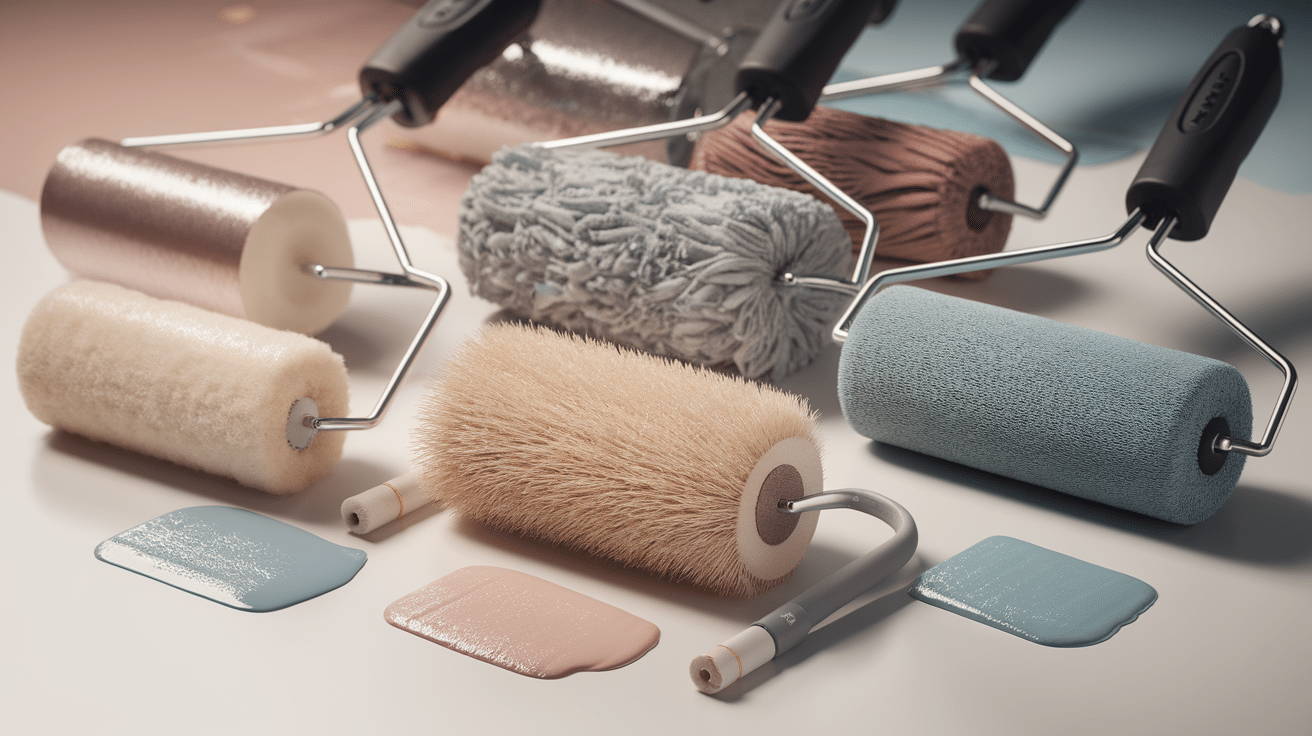
Ideal for high-gloss and enamel paints, creating ultra-smooth, mirror-like finishes.
These rollers are the secret weapon for achieving a professional, near-perfect surface on trim and special projects.
- Best for: High-gloss and enamel paints
- Ideal on: Smooth metal, cabinets, trim
Lambswool Rollers
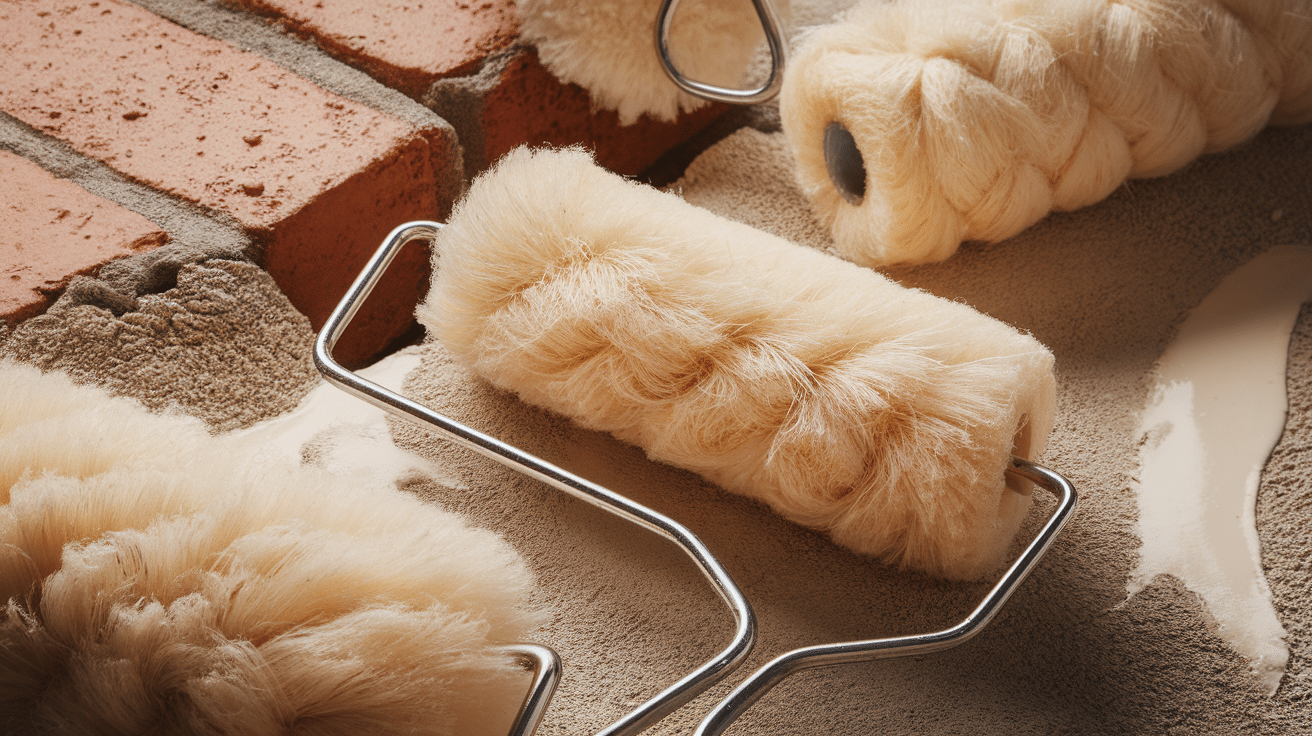
Perfect for rough exterior surfaces and oil-based paints, reaching deep into textured areas.
Their unique fibers ensure complete coverage on challenging, uneven surfaces.
- Best for: Rough exterior surfaces
- Suitable on: Stucco, brick, and textured walls
Final Recommendation: Match your roller cover to your specific project needs. No single roller is perfect for everything!
Understanding Nap Length: Your Secret Weapon
Nap length might seem like a small detail, but it’s the silent hero of your painting project.
Think of nap length like the shoes you wear – you wouldn’t climb a mountain in dress shoes or attend a fancy dinner in hiking boots. The same logic applies to paint rollers.
Short Nap (¼-inch)
A short nap roller has a very thin, tight fiber length—usually around ¼-inch, making it perfect for smooth surfaces where you want a clean, polished finish without visible texture or roller marks. The short fibers hold less paint, reducing drips and ensuring a softer, more even coat.
- Use on: Smooth metal surfaces.
- Result: Glass-like finish
- Perfect for: Doors, trim, cabinets
Medium Nap (⅜ to ½-inch)
A medium nap roller has a fiber length ranging from ⅜ to ½-inch, making it ideal for slightly textured or semi-smooth surfaces like drywall or lightly textured ceilings. It holds more paint than short nap rollers, providing balanced coverage, fewer paint reloads, and a smooth yet slightly textured finish.
- Use on: Lightly textured surfaces.
- Result: Balanced coverage
- Ideal for: Drywall, previously painted walls
Long Nap (¾-inch or more)
A long nap roller has a thicker, fluffier fiber length—usually ¾-inch or more—designed specifically for painting rough, heavily textured, or uneven surfaces such as stucco, brick, concrete, or popcorn ceilings. The longer fibers hold significantly more paint, allowing deep penetration into cracks and crevices, ensuring complete and even coverage on challenging surfaces.
- Use on very rough surfaces.
- Result: Reaches deep into texture
- Best for: Brick, stucco, concrete
Matching Roller to Paint Type
Choosing the right roller depends a lot on the kind of paint you’re using. A simple breakdown:
Oil-Based Paints:
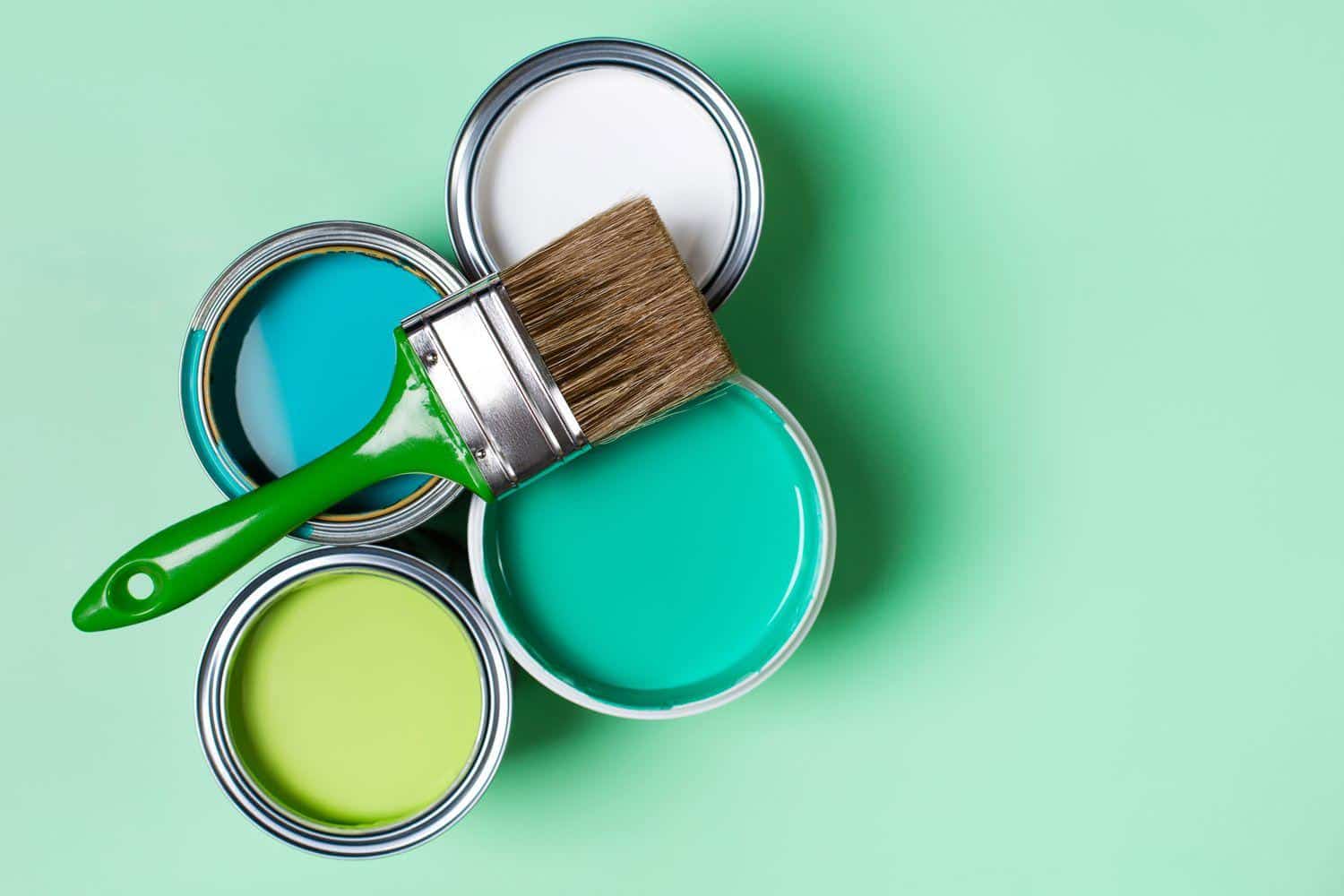
Require natural fiber rollers for optimal performance and even distribution.
These rollers excel at picking up and releasing thick, oil-based paints with minimal streaking.
Latex Paints:
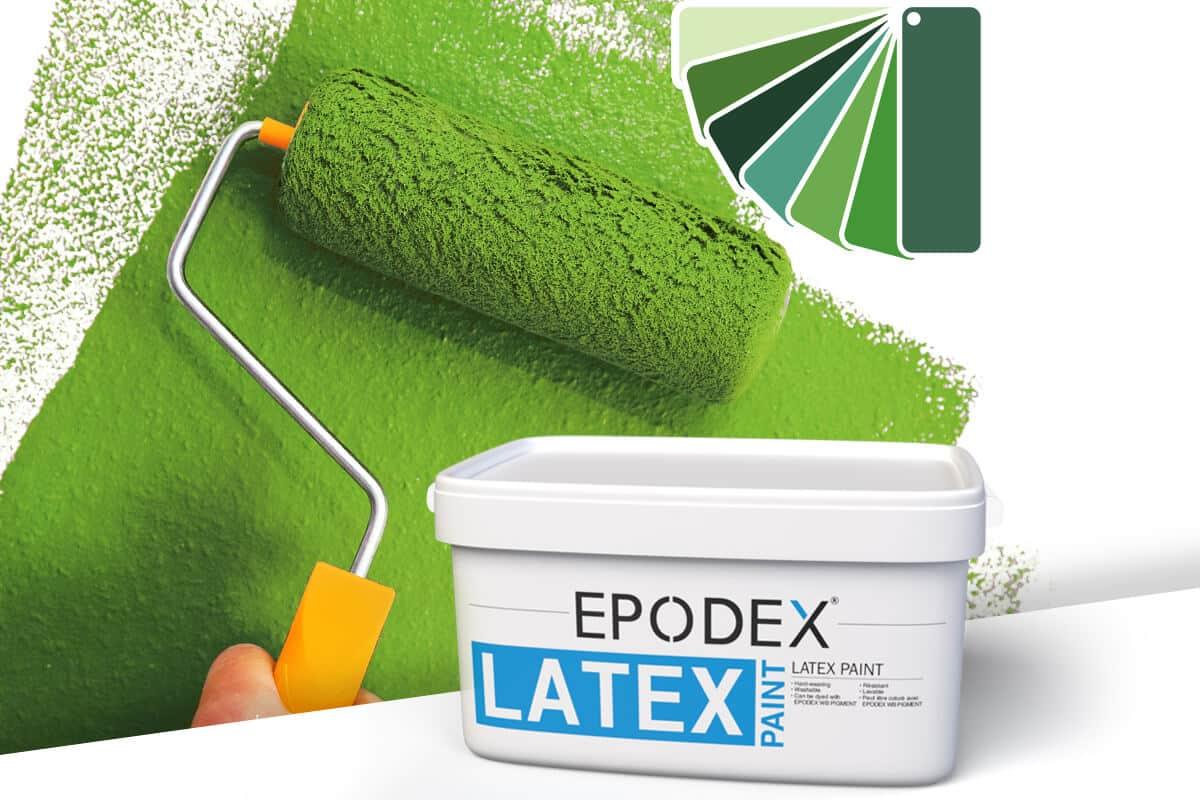
For smooth, consistent coverage, synthetic or microfiber rollers are best. These rollers provide excellent paint pickup and minimal shedding on water-based paint applications.
Specialty Paints:
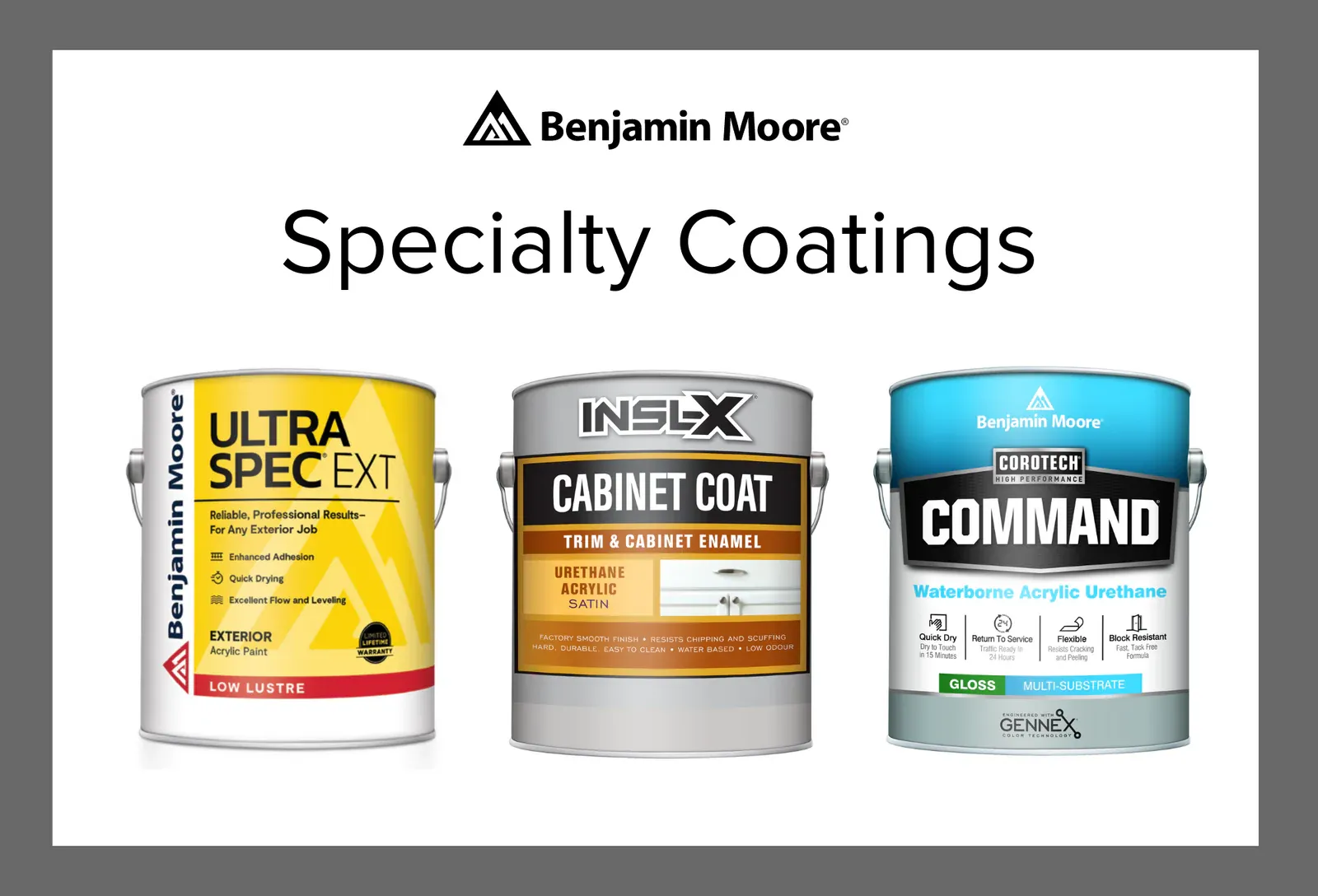
Match roller type to specific paint characteristics for professional results. Different paint finishes demand unique roller materials to achieve the desired texture and appearance.
Pro Tips for Perfect Painting
I’ve painted a lot and learned even more. Here are my best pro tips for painting like a champ:
Surface Preparation: Clean, repair, and prime surfaces thoroughly before painting to ensure a flawless finish.
Proper preparation eliminates imperfections and creates a smooth canvas for your paint.
Tool Quality: Invest in high-quality rollers and paints to reduce work and achieve better results. Superior tools translate to more efficient applications and a more professional-looking outcome.
Application Technique: Use consistent, even strokes and multiple thin coats for professional-looking paint coverage.
Maintain a wet edge and work systematically to prevent visible roller marks and uneven coloration.
Conclusion: Your Path to Pro-Level Painting
Choosing the right paint roller isn’t rocket science – it’s about understanding your surface, paint type, and project needs. By following this guide, you’ll:
- Select the perfect roller every time
- Achieve a professional-looking finish
- Save time and reduce frustration
Ready to transform your space? Pick the right roller, and watch your painting project come to life!
Pro Painter’s Final Tip: When in doubt, ask at your local paint store. They’re always happy to help you choose the perfect tools for your project.

